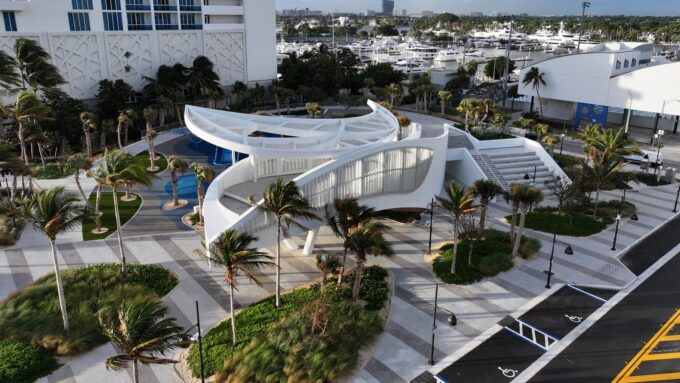- Home
- Articles
- Architectural Portfolio
- Architectral Presentation
- Inspirational Stories
- Architecture News
- Visualization
- BIM Industry
- Facade Design
- Parametric Design
- Career
- Landscape Architecture
- Construction
- Artificial Intelligence
- Sketching
- Design Softwares
- Diagrams
- Writing
- Architectural Tips
- Sustainability
- Courses
- Concept
- Technology
- History & Heritage
- Future of Architecture
- Guides & How-To
- Art & Culture
- Projects
- Interior Design
- Competitions
- Jobs
- Store
- Tools
- More
- Home
- Articles
- Architectural Portfolio
- Architectral Presentation
- Inspirational Stories
- Architecture News
- Visualization
- BIM Industry
- Facade Design
- Parametric Design
- Career
- Landscape Architecture
- Construction
- Artificial Intelligence
- Sketching
- Design Softwares
- Diagrams
- Writing
- Architectural Tips
- Sustainability
- Courses
- Concept
- Technology
- History & Heritage
- Future of Architecture
- Guides & How-To
- Art & Culture
- Projects
- Interior Design
- Competitions
- Jobs
- Store
- Tools
- More
Top Tips for Using Free Realistic Architectural 3D Rendering Engines

Creating realistic architectural 3D renderings without breaking the bank is a dream for many designers and architects. With the rise of free 3D rendering engines, this dream is becoming more attainable. These tools offer impressive capabilities, from high-quality visualizations to seamless cross-platform interoperability, making them perfect for both beginners and seasoned professionals.
However, diving into the world of free rendering engines can feel overwhelming. While many of these tools are user-friendly, there are tips and tricks that can help you maximize their potential. Whether you’re working on a desktop or leveraging cloud-based solutions, knowing how to navigate these engines efficiently can save you time and elevate the quality of your projects. Let’s explore some essential tips to get the most out of your free architectural 3D rendering software.

Table of Contents
ToggleOverview of Architectural 3D Rendering Engines
Definition and Uses
Architectural 3D rendering engines create realistic images of structures using computer-generated imagery (CGI). These engines offer tools to visualize interior designs, exterior landscapes, and full architectural projects. They allow us to experiment with different materials, colors, and lighting conditions to see how the final design might look. This helps in making informed decisions about construction elements and aesthetics.
Free vs. Paid Solutions
Free rendering solutions, like Sweet Home 3D and Wings 3D, cater to beginners and those with limited budgets. They provide essential features for creating detailed models and offer real-time editing capabilities. Sweet Home 3D, for instance, includes a drag-and-drop interface for easy object placement and real-time 3D view updates. However, these free tools might lack advanced features and extensive asset libraries found in paid versions.
Paid solutions, such as Twinmotion and Octane, offer more sophisticated functionalities, extensive asset libraries, and seamless integration with other design software like SketchUp and Revit. These tools support high-quality photorealistic renders and VR experiences, enhancing the visualization process. Users often prefer paid tools for commercial projects due to their advanced features and faster rendering times.

Key Features of Effective 3D Rendering Software
Realism and Quality
High-quality architectural renderings provide realistic images that closely resemble actual photographs. Accurate lighting, textures, and shadows significantly enhance this realism. Engines like Cycles prioritize realism over speed, ensuring superior visual fidelity. Effective software should support advanced rendering techniques like ray tracing, which accurately simulates light behavior for increased detail and accuracy. Attention to details such as caustics and subsurface scattering also matters, as they contribute to a lifelike appearance.
Speed and Performance
Rendering speed influences workflow efficiency. Faster render times mean more iterations and refinements can be made within the same timeframe. Cloud rendering is advantageous for its ability to leverage remote servers, drastically boosting speed without heavy local hardware requirements. Real-time rendering, while faster, may trade off visual fidelity for performance. Balancing speed and quality is crucial to meeting project deadlines while ensuring high visual standards.
Compatibility and Integration
Good 3D rendering software integrates seamlessly with other tools in the design pipeline. Compatibility with various file formats facilitates smooth transitions between different stages of a project. Software supporting multiple operating systems and hardware configurations offers greater flexibility. Incorporating plugins or APIs enhances functionality and workflow efficiency. Integration with commonly used CAD applications, like AutoCAD or Revit, ensures that assets and designs sync without compatibility issues.

Choosing the Right 3D Rendering Engine
Assessing Your Project Needs
Choosing the right 3D rendering engine starts with assessing your project needs. Consider the scale and complexity of your project. Larger projects with intricate details may require more advanced engines, whereas simpler designs can often be managed by free options. Working with a retail client on a backyard project? There may be no need to create anything from scratch. An iPhone app ADU Viewer has a number of AR models to try in augmented reality – right I the client’s backyard. Larger projects with intricate details may require more advanced engines. Evaluate the desired output quality. Free engines, like Blender, offer robust features but may lack the advanced settings found in paid software like Twinmotion. Think about your timeline. If quick turnaround is critical, look for engines with faster rendering times, such as those offering real-time rendering capabilities.
Hardware Requirements
Assessing hardware requirements is crucial when selecting a 3D rendering engine. Ensure your hardware can handle the software. For example, engines like Lumion require high-end GPUs, while less demanding ones like Sweet Home 3D can run on standard configurations. Check the memory capacity. Rendering complex scenes, especially with ray tracing, needs substantial RAM. Verify compatibility. Some engines have specific requirements, such as GPU-based engines like Octane, which need powerful graphics cards. Choosing the right engine often hinges on your computer’s capability to handle the software demands efficiently.

Tips for Optimizing 3D Renderings
Efficient Modeling Practices
Efficient modeling practices significantly improve 3D renderings’ quality and speed. Simplify geometry to reduce polygon count while maintaining essential details. Avoid unnecessary complexity in areas not visible in the final render. Use instancing for repeating objects like chairs or windows to save memory. For example, instead of modeling each chair separately, use instances to reduce the scene’s complexity. Group and organize elements logically for easy editing. Keep your scene lightweight to facilitate faster rendering and easier manipulation.
Lighting and Materials
Lighting and materials are crucial for creating realistic 3D renderings. Use physically accurate lighting setups, such as daylight systems or HDRi maps, to simulate natural light conditions. Adjust intensity, color temperature, and shadows to match the scene context. Materials should have realistic properties, including texture maps for diffuse, specular, bump, and normal maps. Ensure the materials correctly reflect light interaction with the environment. For instance, use a bump map for adding surface details without increasing polygon count. Fine-tuning these elements can drastically enhance the overall realism of the renderings.
Utilizing Plugins and Add-ons
Plugins and add-ons can extend the functionality of 3D rendering engines and streamline workflows. Use geometry nodes or other procedural tools to automate repetitive tasks, such as populating environments with vegetation. Install rendering optimizers to enhance render speed without compromising quality. For example, use a plugin to optimize memory usage by reducing texture sizes dynamically. Leverage asset libraries to quickly access high-quality models and materials, ensuring consistency and saving time. These tools allow us to maximize efficiency and focus on the creative aspects of the project, improving the final output.

Post-Rendering Processes
Enhancements and Adjustments
Post-rendering processes involve enhancing and adjusting rendered images to achieve higher quality and visual appeal. We can use color correction to improve lighting balance, contrast, and saturation. Lighting adjustments can address any issues that may have occurred during the rendering phase, ensuring the final image appears realistic. Using noise reduction techniques can eliminate unwanted graininess, especially in low-light scenes. Additionally, adding depth of field can create a sense of distance and focus, making the scene more dynamic.
Tools for Post-processing
Several tools are available for post-processing rendered images. Software like Adobe Photoshop and GIMP supports advanced image editing features, allowing us to fine-tune our renders. We can also use plugins and filters to enhance visual effects and manipulate colors. For video projects, Adobe After Effects offers numerous capabilities such as keyframing, masking, and integrating other elements. These tools support a wide range of formats, making it easier to work with various output files. Post-production tools help refine the final output, ensuring a polished and professional presentation of our architectural designs.
Conclusion
Using free realistic architectural 3D rendering engines requires an understanding of their capabilities and limitations. Sweet Home 3D, known for its user-friendly interface, serves well for interior design. It enables users to create simple 2D house plans and view them in 3D. The drag-and-drop functionality accelerates design processes, making it ideal for beginners. Users can efficiently arrange furniture and home appliances, ensuring a good level of photorealism for images and videos.
On the other hand, advanced users may prefer engines like Twinmotion. It offers higher-quality outputs and robust integration with design tools. The emphasis on lighting and texture quality results in more realistic renderings. With high rendering speeds, it’s suitable for commercial projects requiring quick turnaround times.
Optimizing rendering involves efficient modeling, proper lighting, and material selection. These practices contribute to achieving the highest level of realism. For instance, accurately modeling scenes in Sweet Home 3D helps maintain performance while producing quality visual outputs.
Plugins enhance workflow efficiency. For example, Octane, a GPU-based rendering engine compatible with various 3D programs, boosts rendering speeds but demands detailed scene optimization. Its large user community and developer support make it a valuable tool for achieving top-tier results.
Post-production remains critical for refining renderings. Software like Adobe Photoshop and GIMP allows for essential enhancements, such as color correction and lighting adjustment. Adobe After Effects adds depth of field effects and noise reduction, contributing to polished presentations. These tools ensure the final output meets professional standards.
Balancing speed and quality, leveraging efficient tools, and using the right post-production techniques guarantee successful architectural presentations. Employing these tips optimizes the use of free rendering engines, providing results that rival paid alternatives.
Submit your architectural projects
Follow these steps for submission your project. Submission FormLatest Posts
25 Best AI Architectural Rendering Tools in 2026
AI is revolutionizing architectural visualization in 2026, enabling faster iterations, richer creativity,...
Architectural Visualization in Motion: When a Still Image Isn’t Enough
High-resolution stills have long been the standard in architectural presentation, but today’s...
Best 3D Printers for Architectural Model Making
3D printing has transformed how architects visualize and communicate their ideas. From...
Visualizing the Invisible: How 3D Rendering Revolutionizes Basement Waterproofing Design
The architectural visualization revolution has transformed how designers approach complex building challenges,...












Leave a comment